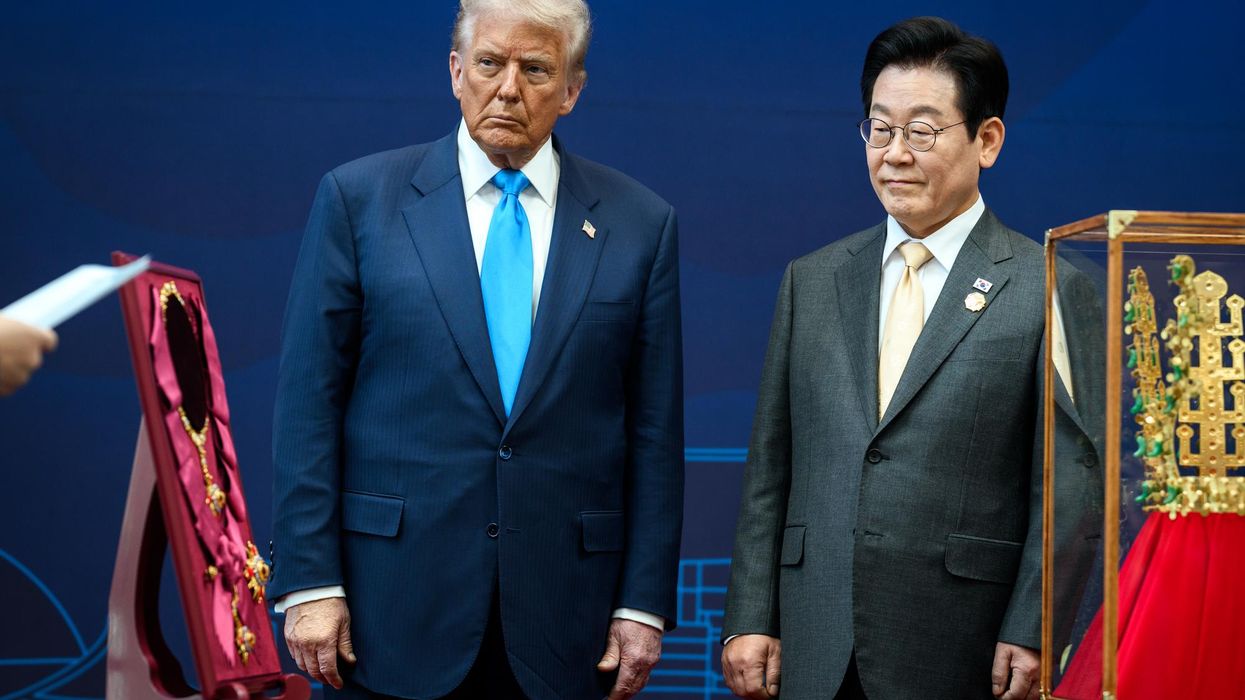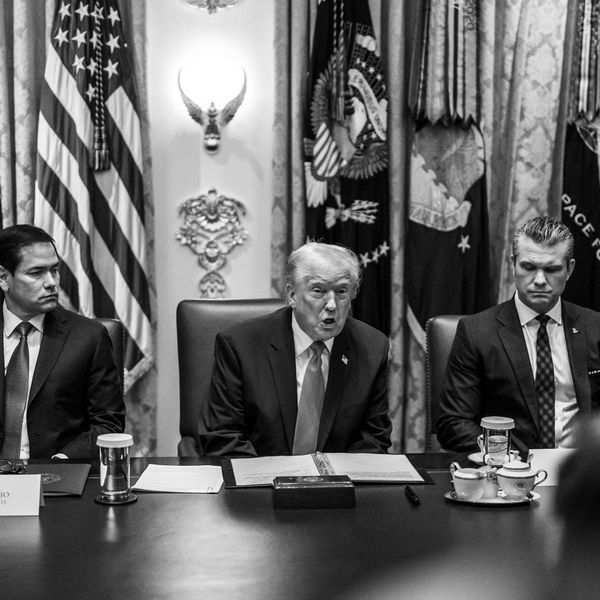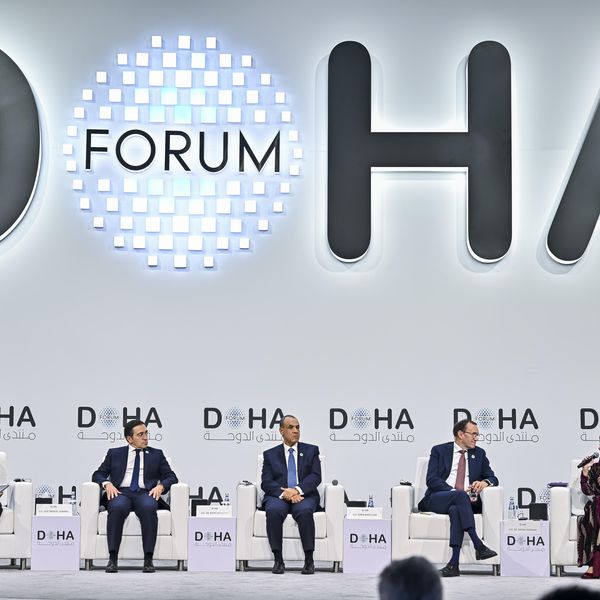The United States is in yet another dust-up with militias in Iraq and Syria, with U.S. aircraft striking facilities that the Pentagon says are associated with recent drone attacks against bases in Iraq that house U.S. military personnel. Such attacks, using drones and other means, have become frequent. The U.S. reprisals for such attacks thus risk also becoming a regular occurrence.
Most public discussion of this latest exchange has a narrow, tactical focus. There is hand-wringing, for example, over the drone capabilities of the militias — which is an understandable focus of the U.S. military commander for the region.
The exchange of attacks also is getting viewed as part of U.S.-Iranian bargaining over returning to compliance with the agreement that restricts Iran’s nuclear program. Maybe the Biden administration wanted to exude some toughness for this reason. And maybe a similar intent on the part of the Iranian regime has had something to do with attacks by the militias — although the habitual affixing of the label “Iranian-backed” on these groups obscures how the attacks may have at least as much to do with the motivations and objectives of the militias themselves as with any intentions of Tehran.
As long as U.S. troops remain in Iraq and Syria, the attacks will continue. The most recent U.S. airstrikes evidently did nothing to deter a rocket attack the next day against a U.S.-inhabited site in northeast Syria.
The narrow, tactical focus obscures the far more fundamental question of why the U.S. military personnel who are enduring the militia attacks are still deployed in that part of the Middle East, and whether whatever purpose their deployment serves outweighs the costs of their being targets for attacks by local armed groups. Cogently answering that question requires shedding some historical baggage.
Insofar as any U.S. military presence in the Middle East involves counterterrorism, the baggage that needs to be shed is the post-9/11 idea of “fighting them over there so we don’t have to fight them at home.” At least since the eradication of the mini-state or “caliphate” that the group known as Islamic State or ISIS had established in western Iraq and eastern Syria, not fighting terrorists in the United States — where the principal terrorist threats are now home-grown — is not a matter of military operations in the Middle East. An international conference this week on countering ISIS recognized that if there is an ISIS surge anywhere today, it is in Africa.
Since long before 9/11, foreign troop deployments have been more of a stimulus to, and target for, terrorist attacks than a preventative or deterrent to such attacks. The United States has a history in the Middle East that has demonstrated this, including attacks on the Marine barracks in Lebanon in 1983, Khobar Towers in Saudi Arabia in 1996, and the USS Cole in Yemen in 2000. Scholarly research has confirmed this pattern with other regions and other foreign militaries.
The pattern should not be surprising. The boots of a foreign military on one’s home turf can be one of the most offensive and enraging things for those who call the turf home. This is probably as true for many members of militias in Iraq and Syria as it is for anyone else.
With regard to other foreign powers being active in the Middle East, the baggage to be discarded is the Cold War habit of thinking of the Middle East as a playing field on which the United States and the USSR competed for influence. Today, Russian influence in the region does not come close to what the Soviets achieved except in Syria — where the small U.S. military presence in the northeast of the country does nothing to reduce the Russian presence and may even help provide a rationale for it. China’s efforts to build influence in the region are chiefly nonmilitary, in response to which any U.S. troop presence is useless.
As for powers within the region, Iran is of course the constantly-invoked bête noire, and it has often been invoked as a reason for having troops in Syria and Iraq. The Trump administration considered “keeping an eye on Iran” as sufficient reason to retain some troops in Syria, and Trump said his principal reason to keep troops in Iraq was to “watch Iran.” Those who thought Trump was nonetheless moving too fast to draw down the U.S. troop presence in these countries and Afghanistan said what they most feared were Iranian attacks.
Iran is a mid-level regional power whose ability to harm U.S. interests is quite limited, especially through any means that involves projecting power at a distance. If Iran appears more ominous than this in many eyes, it is not only because of another piece of baggage, dating back to the early days of the Islamic Republic, that turned it into a villain for Americans but also because of the maximum demonization of Iran that suits the objectives of certain other Middle Eastern states that want to blame it for all the ills of the region.
Look carefully at how Iran today could actually harm U.S. interests if it chooses to do so, and harm to U.S. military personnel in countries close to Iran is mostly what is involved. Analysis of the ways in which Iran realistically could be expected to strike back for any perceived offenses by the United States almost always focuses on the vulnerability of U.S. troops to the east of Iran in Afghanistan (from which most of the remaining U.S. troops will soon be withdrawn) and to the west of Iran in Iraq, and perhaps also U.S. naval forces in the Persian Gulf.
In short, the same forces that supposedly are in the area to counter feared attacks from Iran (or its purported proxies) are themselves the likely targets of any such attacks — which they would not be if they were brought home. The circularity of the rationale for keeping troops in that area should be obvious. And the most recent attacks on the troops in Iraq and Syria ought to be a remainder of that circularity.
Moreover, keeping troops in Iraq, with all the attendant vulnerabilities, does nothing to diminish Iranian influence there. It might even help to sustain support for an Iranian role in Iraq, given the desire of nationalist-minded Iraqis to balance their relations with both outside powers and not to throw their lot in completely with either one of them.
It is worth noting that the most recent U.S. airstrikes were denounced not only unsurprisingly by the Syrian regime but also by the same Iraqi regime that the United States supposedly is there to help. The Iraqi cabinet described the strikes as a “flagrant violation” of international law and reaffirmed the need to complete logistical details for removing all U.S. combat forces from Iraq. A spokesman for Prime Minister Mustafa al-Kadhimi said that Iraq did not want to become an “arena for settling accounts.”
















